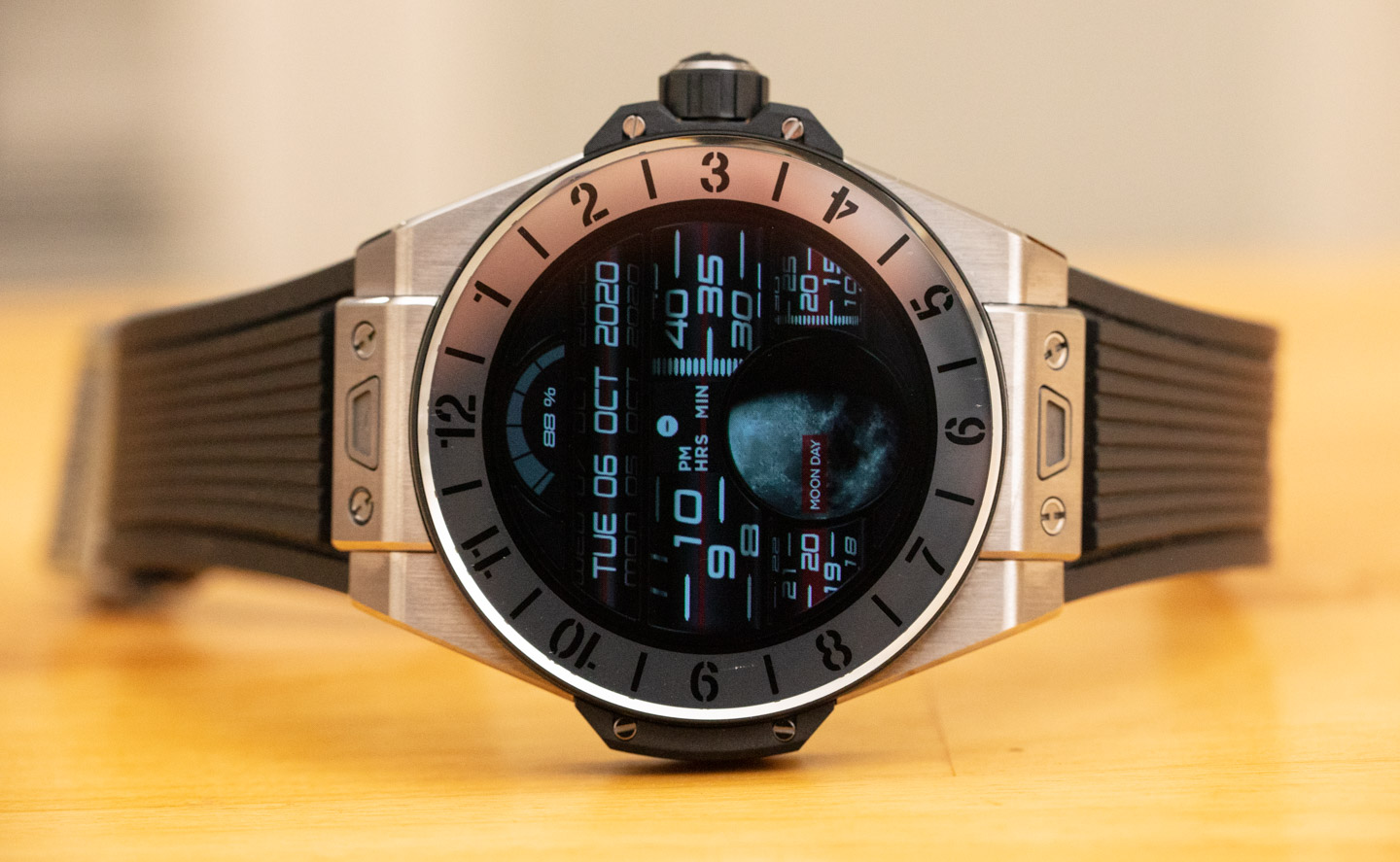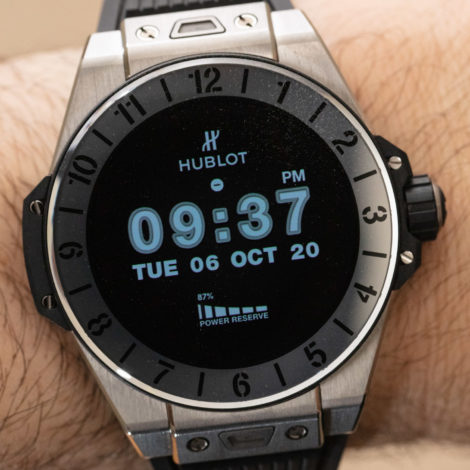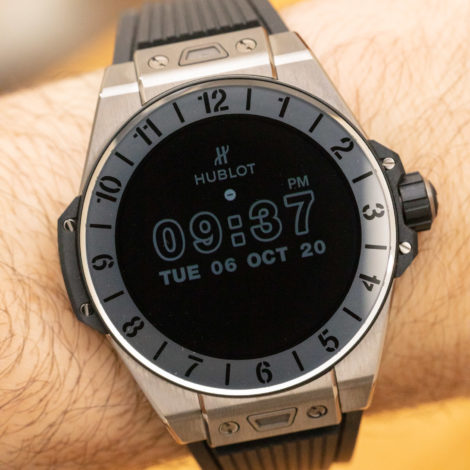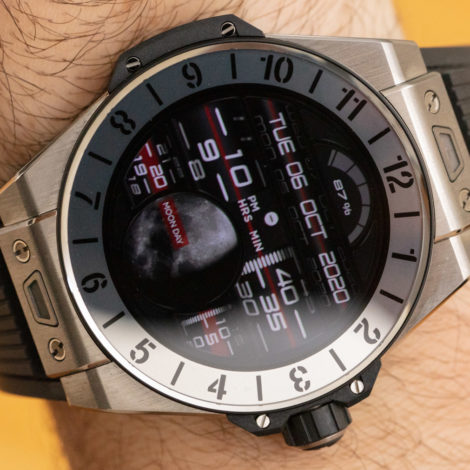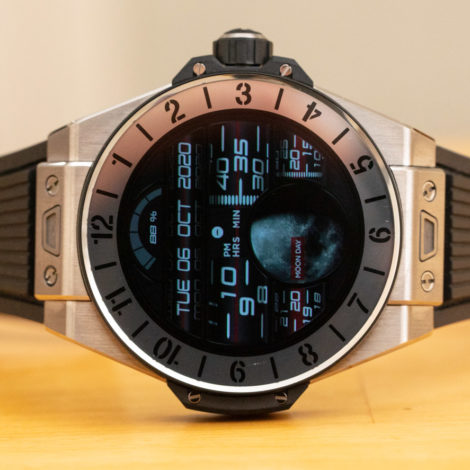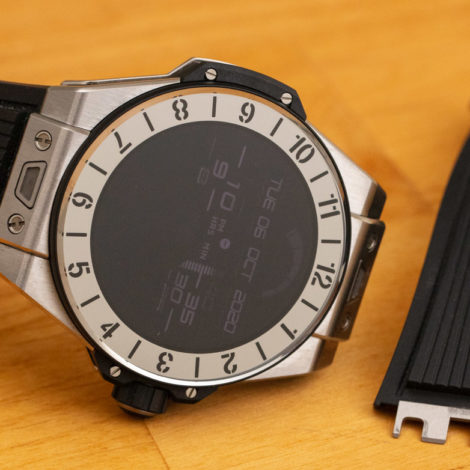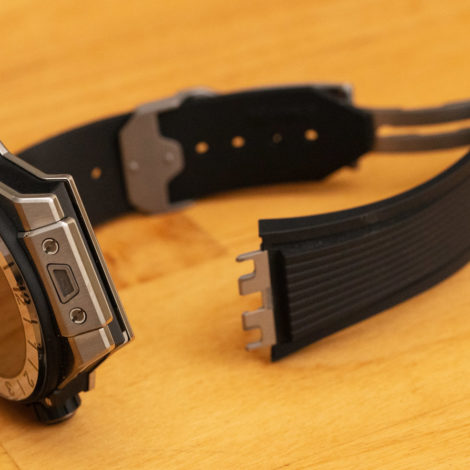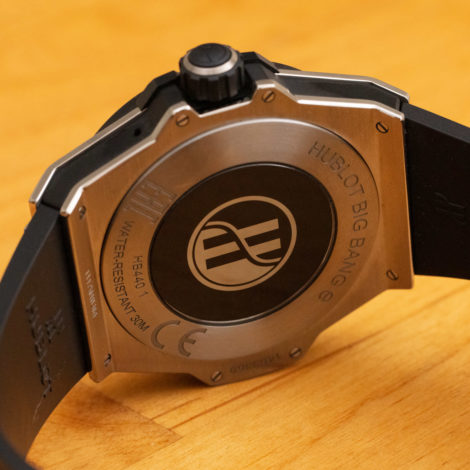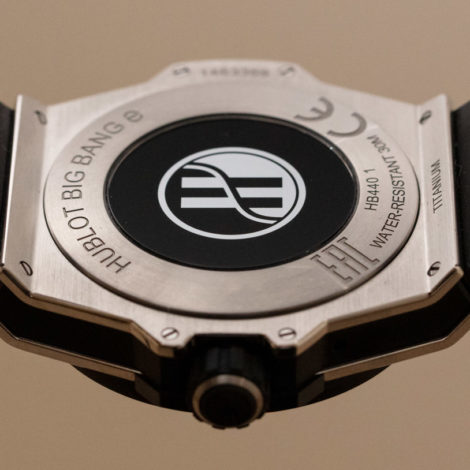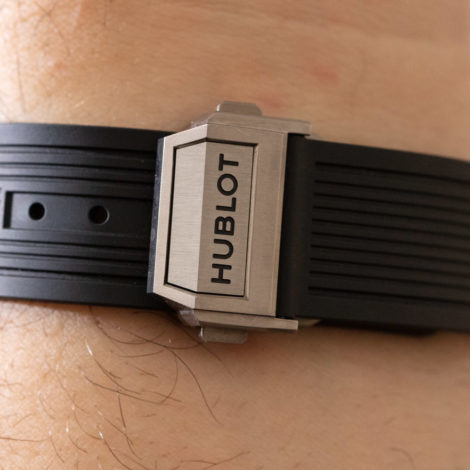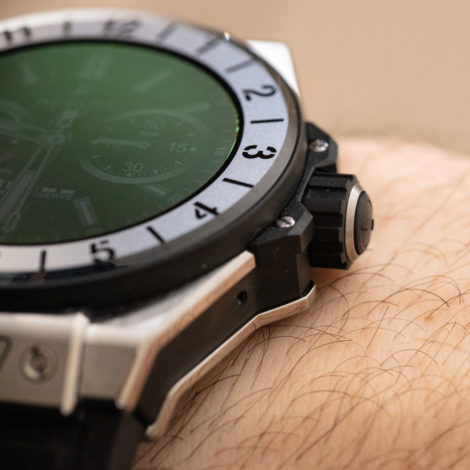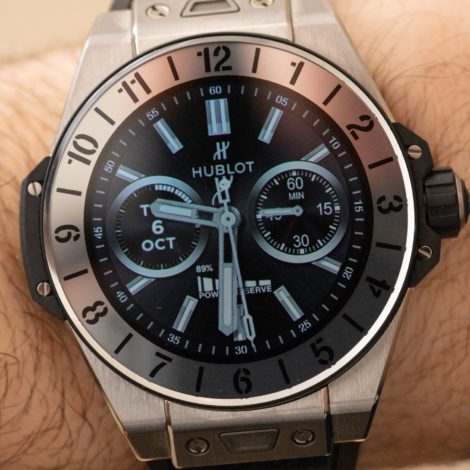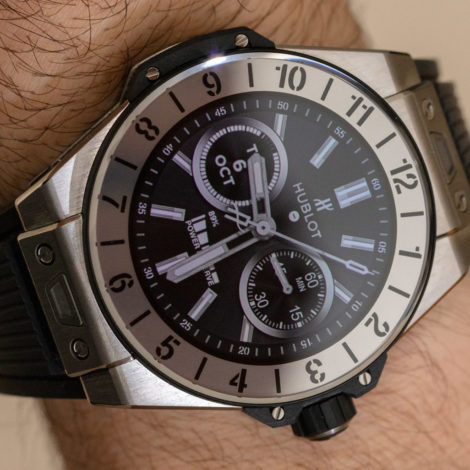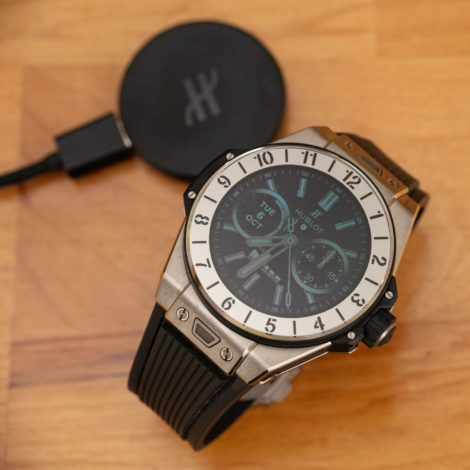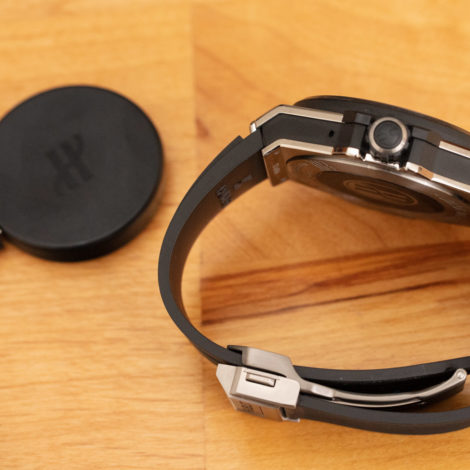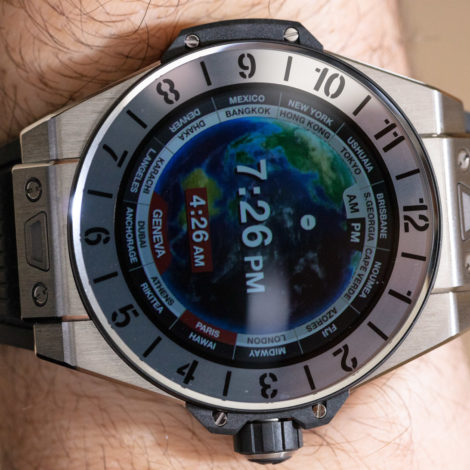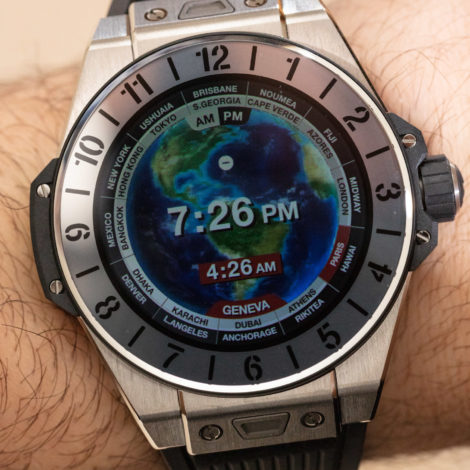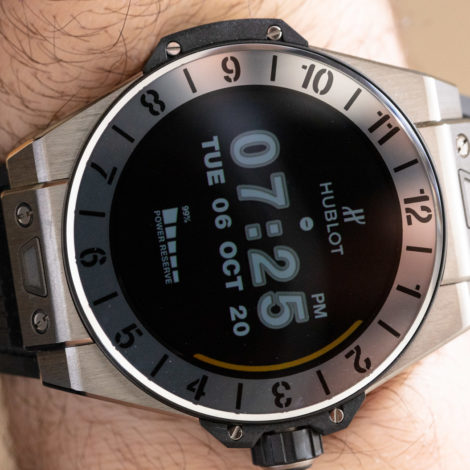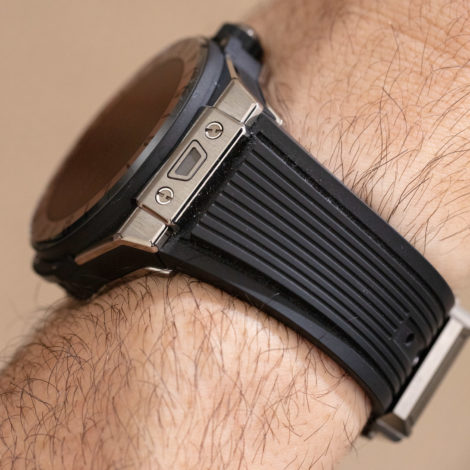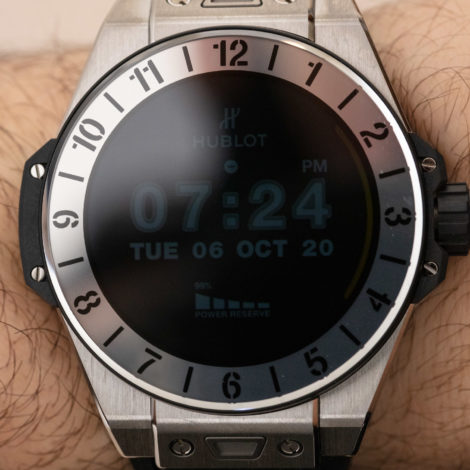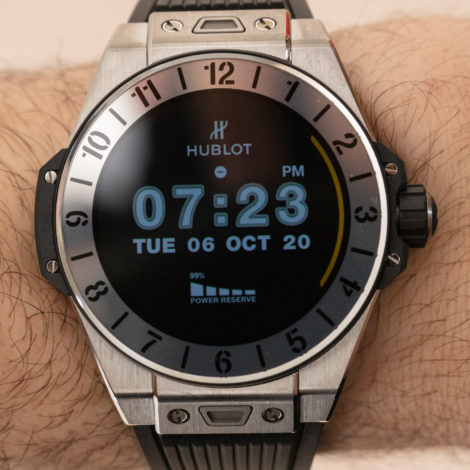
Swiss Hublot followed other LVMH-owned luxury watch brands by introducing a dedicated smartwatch as part of the brand’s timepiece lineup as early as 2018. For 2020, Hublot debuted an upgraded, non-limited-edition smartwatch product known as the Hublot Big Bang e (“e” presumably for “electronic” versus mechanical). The Big Bang e joins LVMH brands TAG Heuer and Louis Vuitton, which also have their own smartwatches — all of which use a similar electronics hardware package. What makes the various Google Wear OS-powered devices different are the external cases, personalities, and some of the unique watch face software options that come on the respective products. Let’s take a look at how the Hublot Big Bang e shapes up as a smartwatch.
As a smartwatch enthusiast what I like most about the Hublot Big Bang e is the overall design and wearing experience. Smartwatches have come a long way in just a few years, notably when it comes to always-on screen brightness and technology. A few years ago, it was the norm for smartwatches to have black, blank screens, but today, with more modern technology, no smartwatch needs to have a blank face while it is being worn on the wrist. The result is a more traditional wristwatch wearing experience that includes the expressive nature of a case and strap design — including that of the watch face itself. This is a big deal, in my opinion.
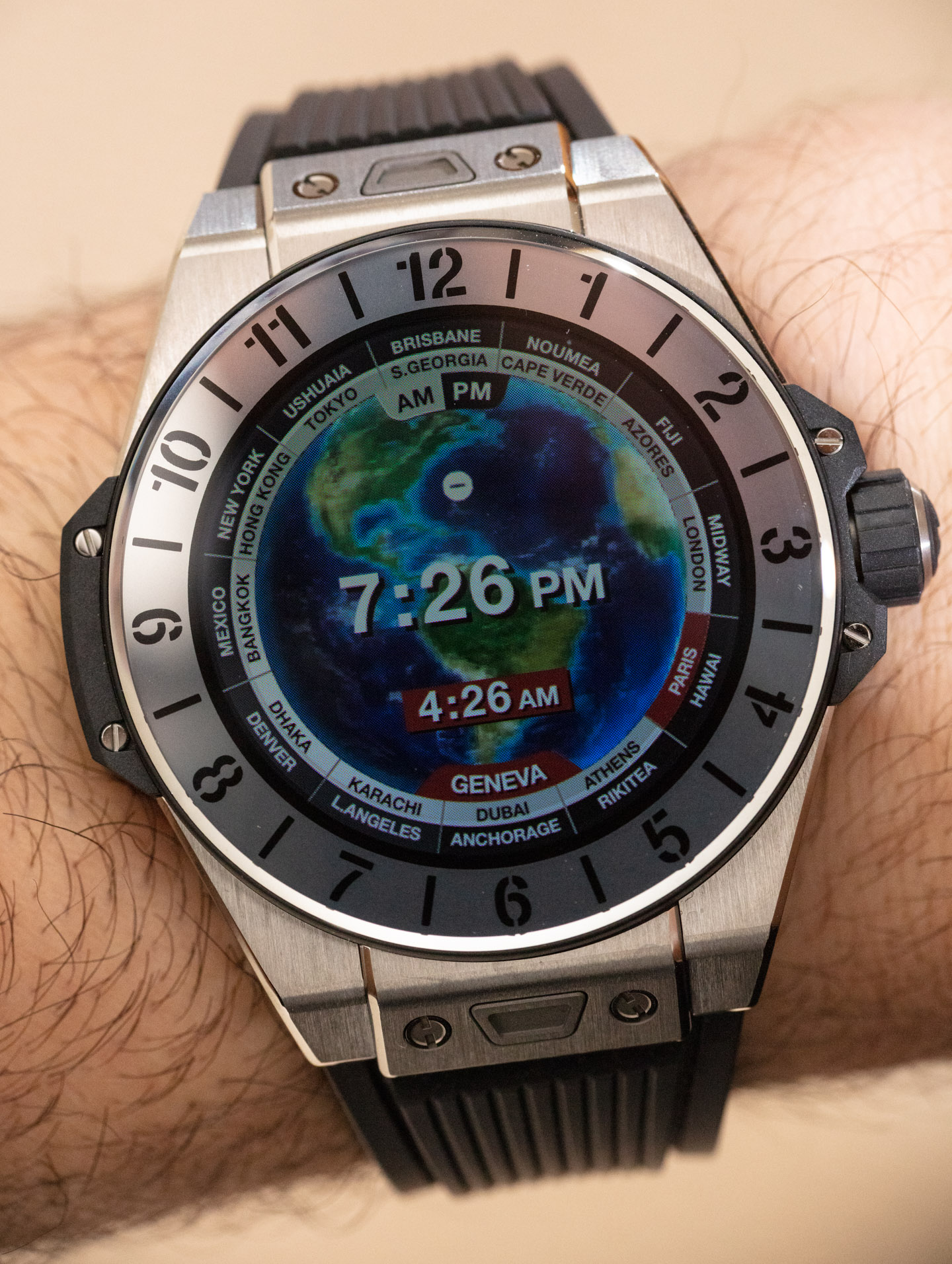
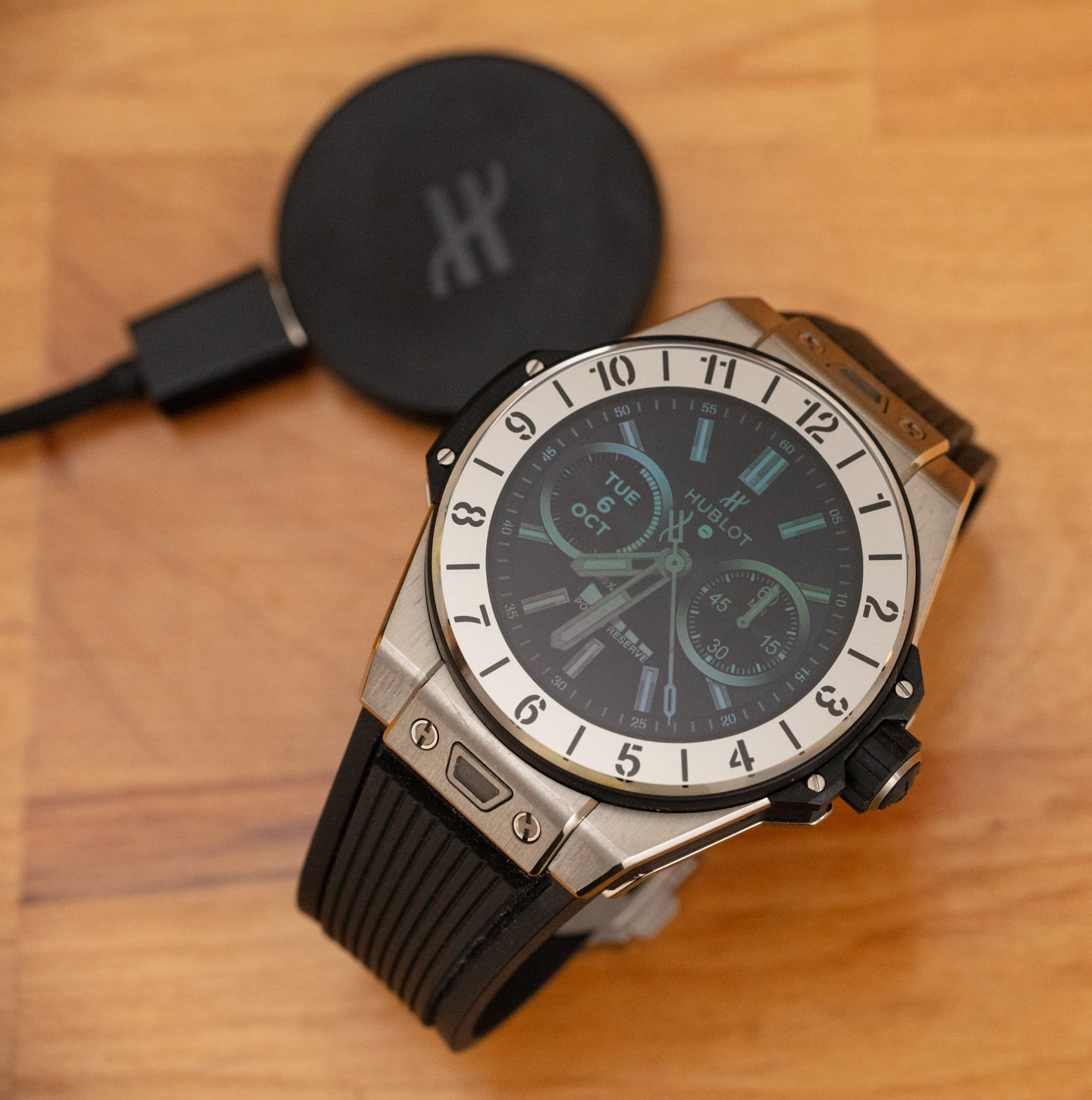
Why a big deal? Because it helps the Big Bang e wearing experience be eerily similar to that of the standard Big Bang. No, the watches are not identical, but for the first time, I am wearing a luxury smartwatch that I can often forget is a smartwatch. That means the 42mm-wide case size (about 13mm thick, ~55mm lug-to-lug distance, and 30 meters water resistant) Big Bang e is more or less the same dimensions as its mechanical cousin — and both of them sport similar case materials and finishes. In many respects, Hublot Big Bang e wearers very much fit in the same club as traditional Big Bang watch wearers. So, while the Hublot Big Bang e is pricey for a smartwatch, it is a relative bargain for an Hublot.
Hublot offers a few versions of the Big Bang e, including this titanium-cased model along with blue or black ceramic models. All of them have sapphire crystals over the bezel and Hublot’s well-designed easy-release strap changing system. The integration of the color touchscreen with the sapphire crystal is very nicely done, given how much the dial feels it is not at all sunken in but right there on the very top of the screen as though it was floating in the sapphire crystal. The screen is bright, and the touch screen is responsive.
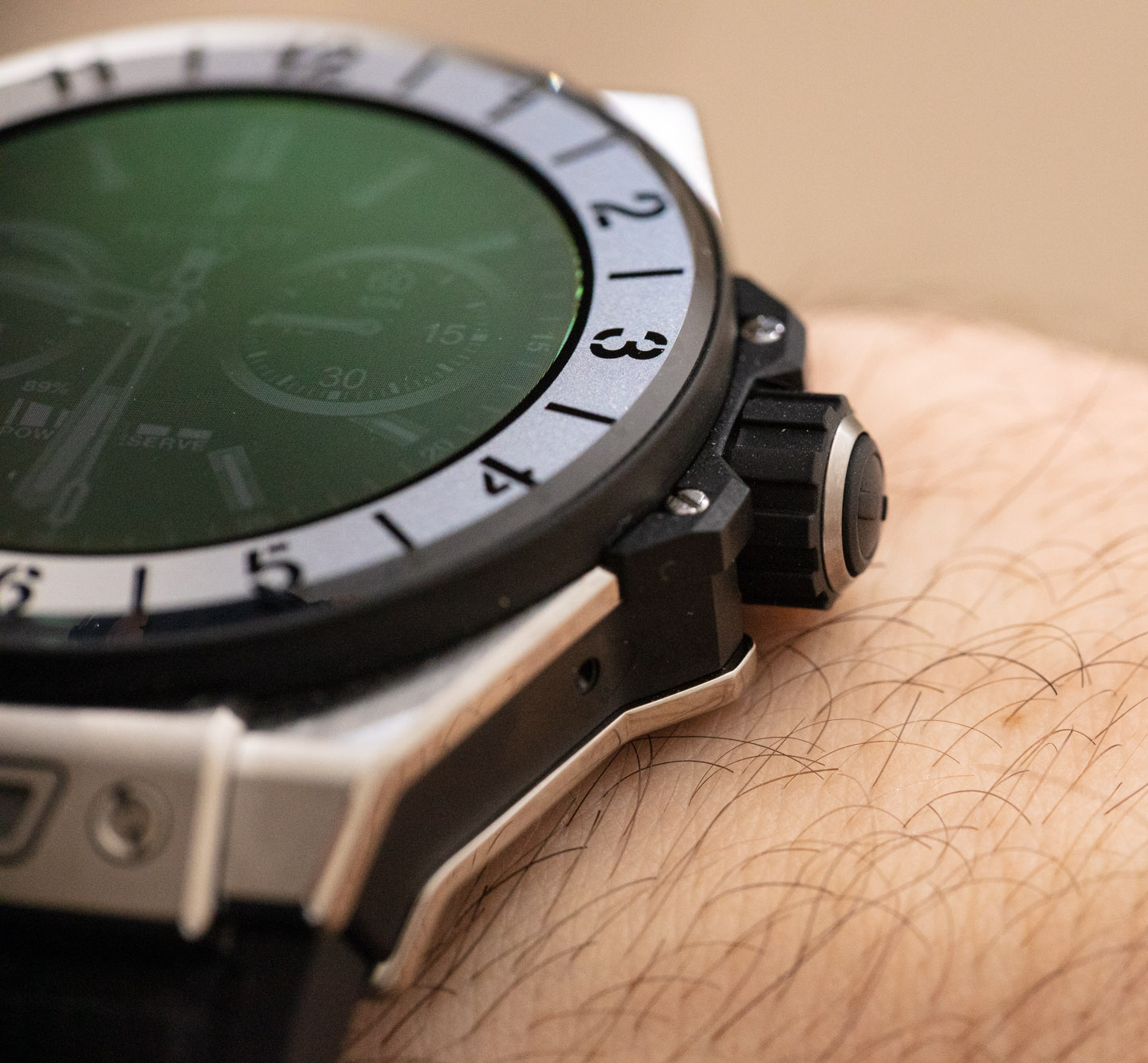
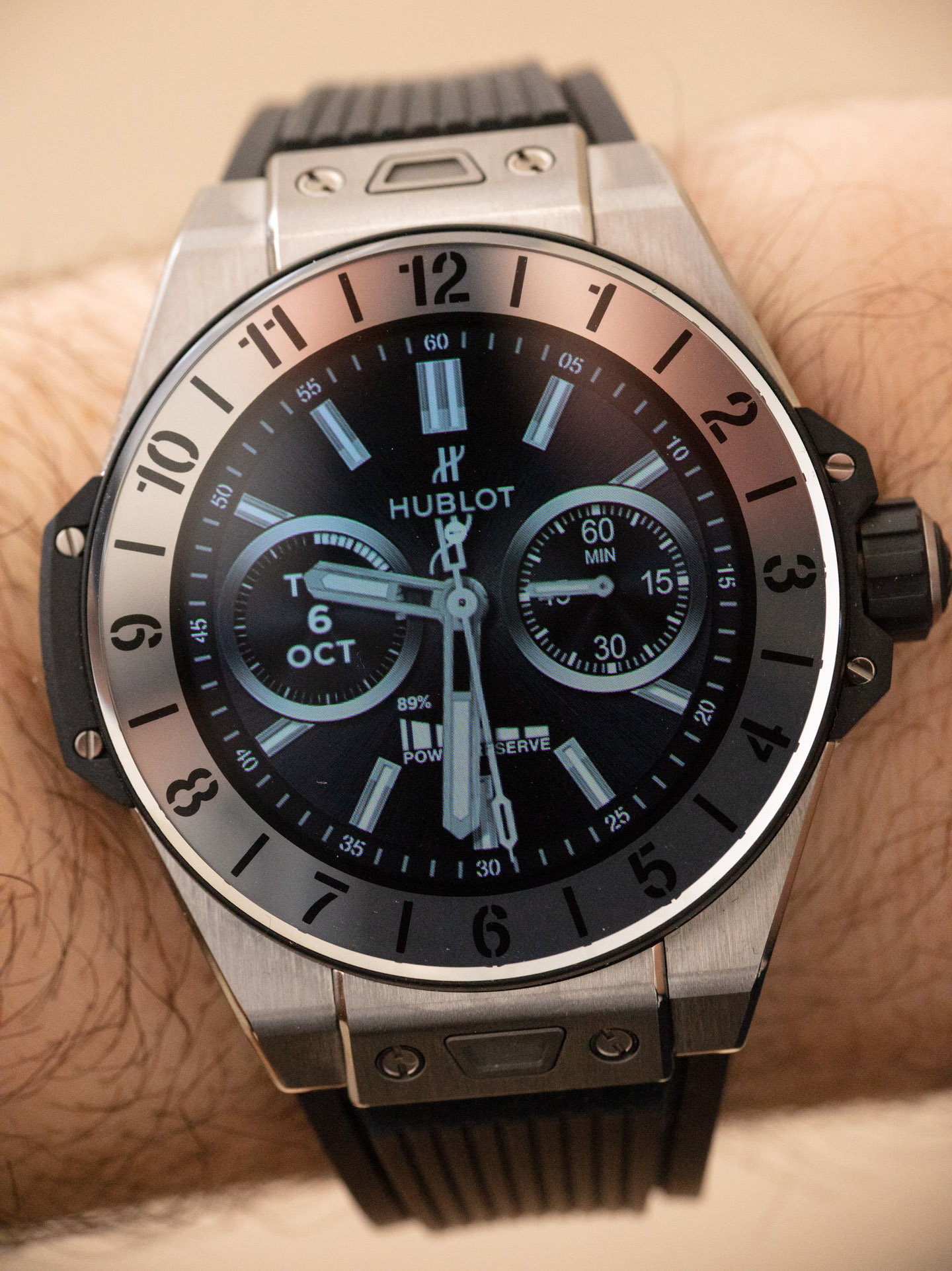
In addition to the touchscreen, the watch crown operates both as a button and scroll wheel. This is, of course, also shared on the Louis Vuitton and TAG Heuer Connected smartwatches. At this time, I believe the Hublot is the most expensive of them all, though Louis Vuitton likely has some rather ritzy versions of its smartwatch by now. The case is not identical to Hublot’s more expensive mechanical watches in the Big Bang collection but for a smartwatch is very high-end, for sure. Hublot makes a 42mm-wide version of the Big Bang, as well, which you can put the Big Bang e next to and they look like very close siblings.
As a smartwatch the Big Bang e is fine, but nothing world-class. The most glaring omission for me is the lack of a heart rate monitor — which I think should be considered more and more standard. Smartwatches are increasingly being defined by their on-board sensors, as opposed to the notifications they can show you. The watch still has an accelerometer built into it (and other basic movement sensors), but it lacks popular sensors available in mainstream smartwatches from Apple and Garmin such as GPS, a heart rate monitor, and other environmental or body-metric sensors. Hublot would probably counter that its customers have specialized smartwatches for sports activities and exercise, and are mostly younger people seeking the connected convenience of a modern smartwatch with the style of an Hublot. That wouldn’t be incorrect, but the more correct thing to do would be to focus on installing such tech into the next generation product. Enough people will buy the Hublot Big Bang e for the fun and novelty factor. But for Hublot to gain any serious market share and keep people on board for watch after watch, it needs to make sure that for such premium prices, its products offer at least as many features as products costing merely a few hundred dollars.
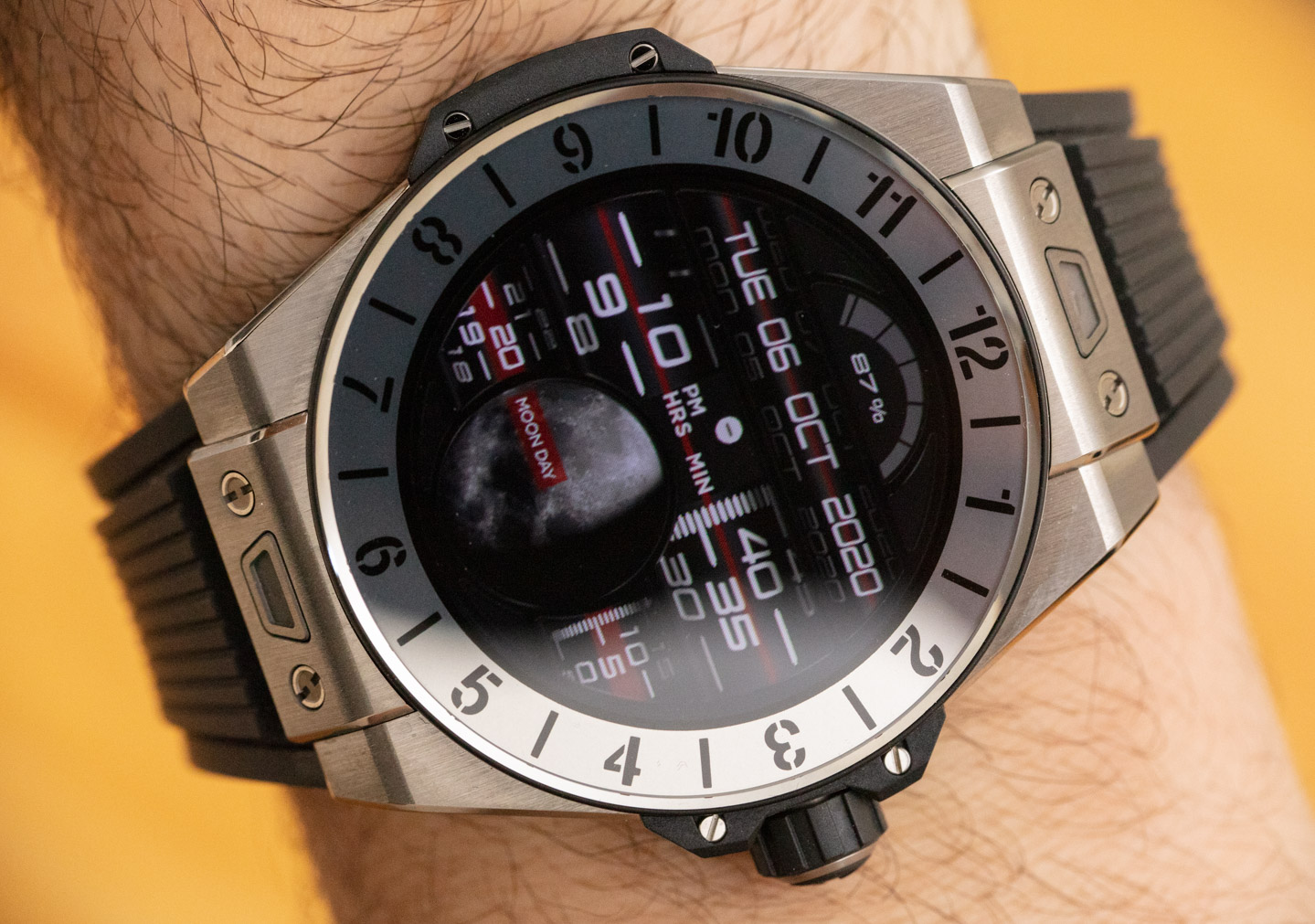
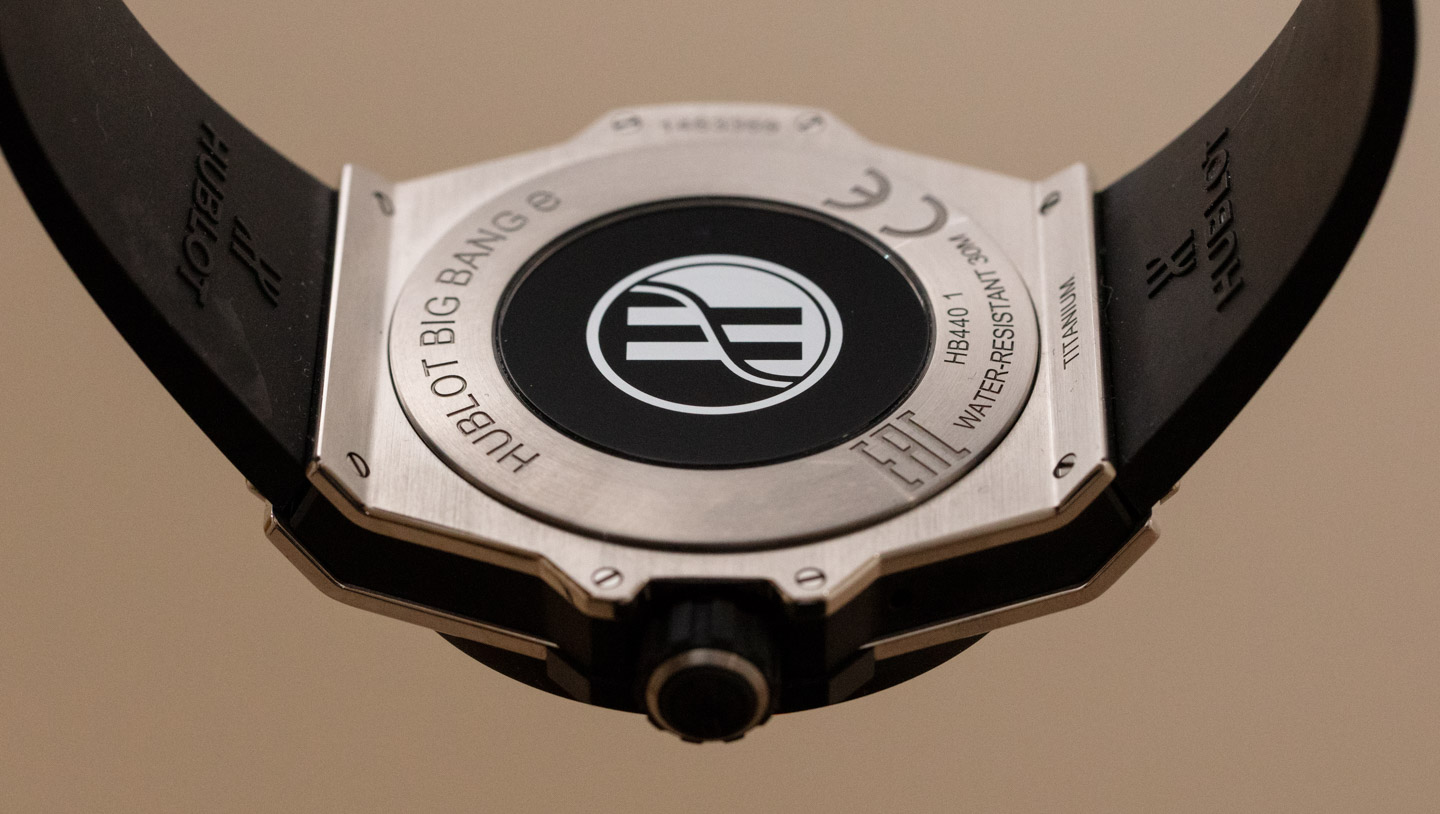
At launch, Hublot teased how sexy the Big Bang e watch dials would be when showing off some of the more artistic watch dial software it created for the Big Bang e. There aren’t too many of the exclusive watch dials, but they are all pretty decent. The most interesting is called the Marc Fererro, and it is actually a large assortment of visual composition with watch hands. When you load this face, the default option is to simply randomly cycle through the various dials… within the dial selection. It is cool, but the lack of any real personalization or customization in the Hublot watch face software options feels limiting. Indeed, Hublot is not a software company, but for over $5,000 a pop, I think investment into hiring a third-party company to design a slew of cool watch faces would have been worth it. I want to take this opportunity to suggest that, in the near future, I believe the luxury smartwatch buying experience will be as much about the hardware as it is the software. Buyers shelling out luxury premiums for European brand smartwatches should get an entirely curated experience of watch faces, interesting software, and a lot of artistic flair. With constant updates. Luxury watchmakers are slowly figuring this out, but it will still be some time before a luxury smartwatch interior is as interesting as its exterior.
As I said above, the Hublot Big Bang e is a Google Wear OS-powered smartwatch, which means it will have a superior experience on Android-based smartphones. You can certainly use it with an Apple iPhone, but it is hard to compare the experience with how neatly integrated an Apple Watch is with the iPhone. For me, the most satisfying experience with Google software smartwatches is on Google software smartphones.
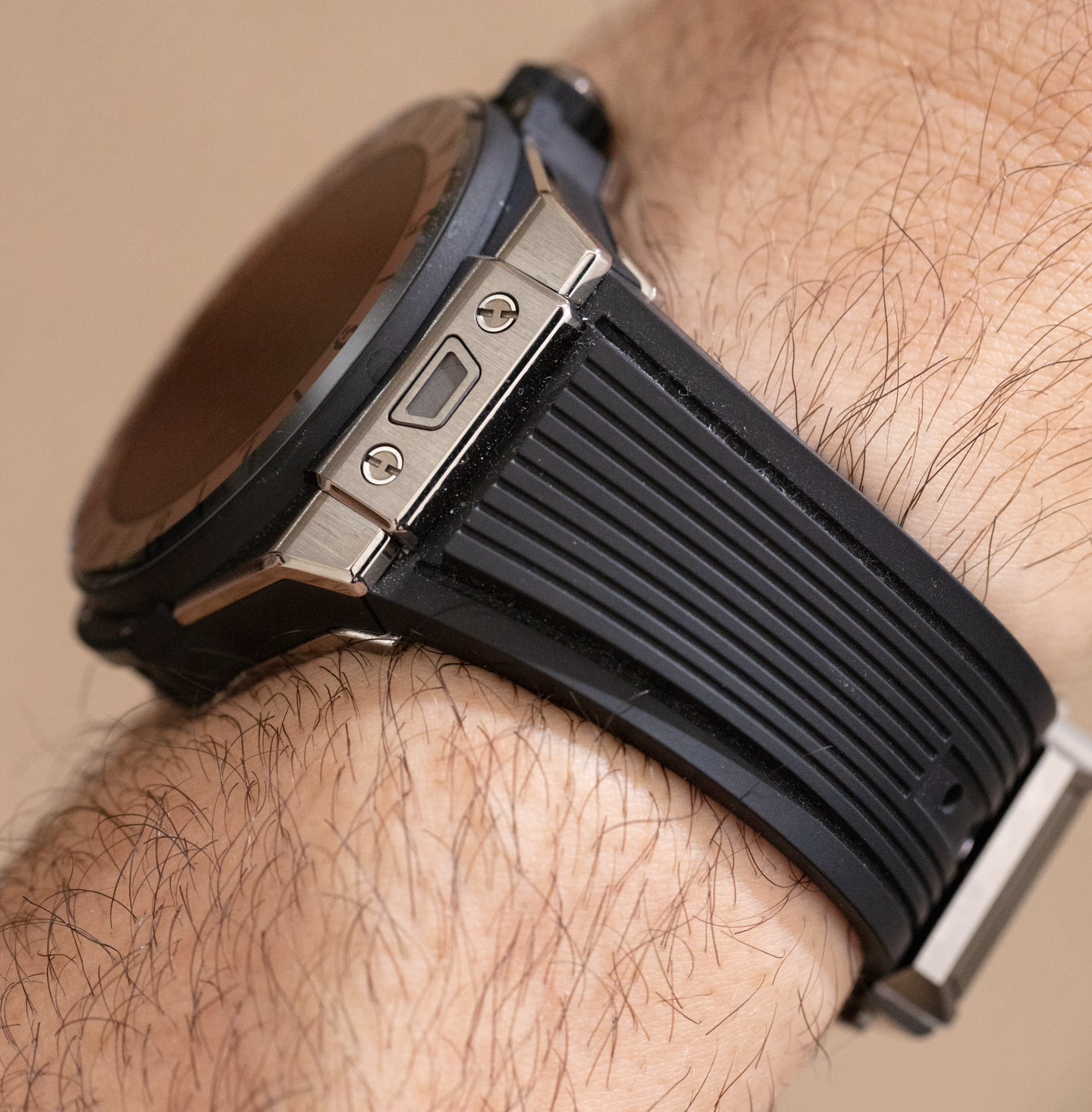

With about a day of battery life, you’ll need to charge the Big Bang e often enough. Hublot offers a magnetic contact-based charger. It’s decent but not fancy enough. It forces you to put the watch on its side or face to charge, which is not how the luxury watch industry has trained people to handle watches. I think Hublot should design some type of optional stand to rest the watch on in order to allow it charge while not risking scratching the case. It isn’t a deal-breaker, but it goes to show that Hublot isn’t yet accustomed to the various nuances that make wearing a smartwatch distinct from that of a traditional watch — where they tend to excel when it comes to ergonomics.
Aside from the TAG Heuer Connected smartwatch (from the same parent company as Hublot), there isn’t much on the market that feels like a direct competitor to the Big Bang e. It is rich with personality and very masculine. The Apple Watch beats it in sheer functionality but loses when it comes to macho sex appeal. That more or less implies that the luxury men’s smartwatch market is ripe for development given the many types of niche user groups out there who want some social status and fashionability served up with their smartwatch’s otherwise utilitarian wearing experience.
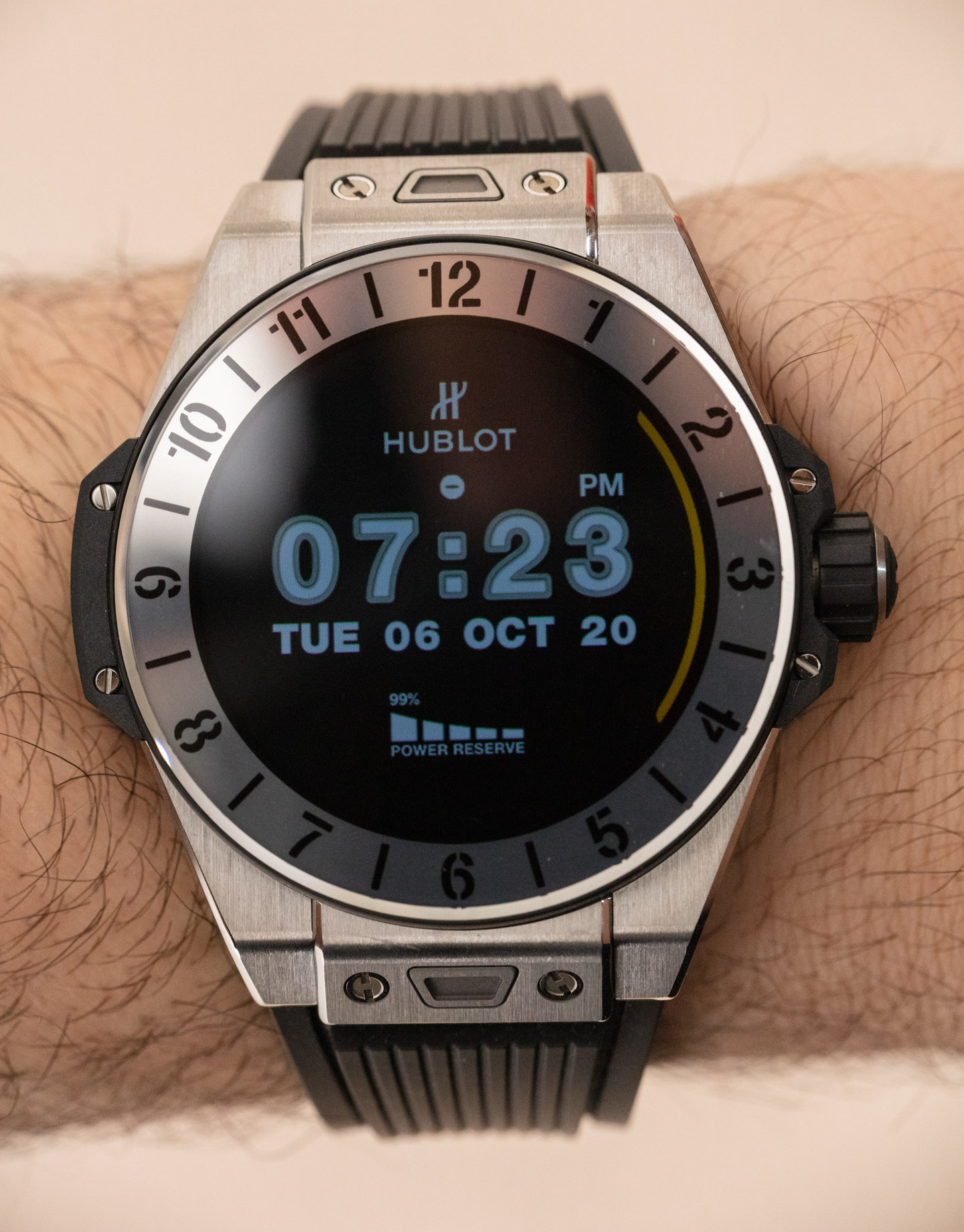
My suspicion is that Hublot is already doing very well with the Big Bang e simply because so little of the consumer demand for luxury smartwatches is being met thus far. Hublot gets to capture a wide market share even though its product isn’t as fully-featured as the leading smartwatch products. While I lament the lack of a heart rate monitor and more tracking features, I love the style of the Hublot Big Bang e and find it much more satisfying to wear out in public. I do hope that Hublot continues to invest in its smartwatch products and applies an iterative approach to making each new smartwatch product better than the last one. It is safe for me to say that the smartwatch category is not really a threat to an authentic mechanical luxury watch market. Smartwatches can only wish they offered the emotional satisfaction of an actual watch mechanism and dial. Smartwatches do, however, represent the next frontier in the mainstream consumer’s experience with things on their wrist. If traditional watchmakers don’t buy into that experience, they will probably risk losing countless possible consumers. Hublot is doing what is wise.
This reference 440.NX.1100.RX Hublot Big Bang e 42mm-wide titanium smartwatch is currently the entry-level model. Inside it contains a Qualcomm Snapdragon Wear 3100 processor. It represents the latest model as of Summer 2020 when it was released. I look forward to the next one. Price for the Hublot Big Bang e reference 440.NX.1100.RX is smartwatch is $5,200 USD. Learn more at the Hublot website here.

